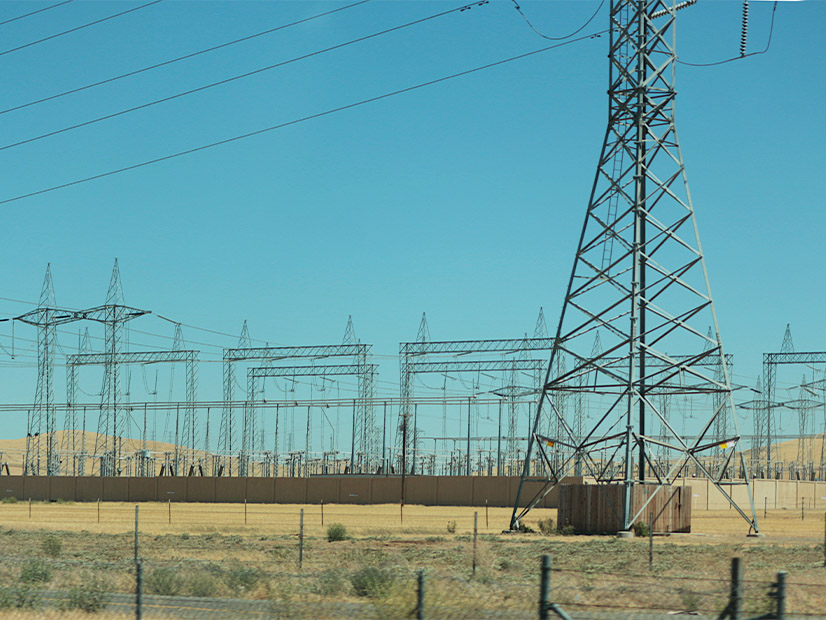The issue of how to allocate transmission plan deliverability for projects with long lead-time network and reliability upgrades remained the center of discussion at a CAISO Interconnection Process Enhancements Working Group meeting.
The issue of how to allocate transmission plan deliverability (TPD) for projects with long lead-time network and reliability upgrades remained the center of discussion at a Sept. 4 CAISO Interconnection Process Enhancements Working Group meeting.
The stakeholder group focused in part on whether to retain or do away with TPD allocation Group D. (See CAISO IDs More Challenges in Refining Interconnection Process.)
CAISO allocates TPD to projects separated into four groups. Group A is for customers with executed power purchase agreements and those in the current queue cluster that are load-serving entities serving their own load. Group B includes those actively negotiating a PPA or on a shortlist. Group C is for those that have received commercial operation for the capacity-seeking TPD.
Group D consists of interconnection customers electing to be subject to the Generator Interconnection and Deliverability Allocation Procedures (GIDAP) section (8.9.2.3) in CAISO’s tariff. Being part of that group comes with certain requirements that the ISO and stakeholders considered potentially too restrictive. An interconnection customer in Group D cannot request suspension under the ISO’s Generator Interconnection Agreement (GIA), delay providing its notice to proceed as specified in its GIA or delay its commercial operation date (COD) beyond the date in its interconnection request.
In the Track 3 revised straw proposal, CAISO proposed eliminating Group D.
Bob Emmert, CAISO senior manager of interconnection resources, said cluster 14 of the CAISO interconnection queue included many projects that were unable “to get an allocation through the PPA path or shortlisted path, so they went and chose the allocation group D path.”
“So, a lot of capacity was allocated to those projects, which is actually impacting the [number] of projects that can be studied in cluster 15,” Emmert said. “We didn’t think that was really the best way to go — to, each year, give out some conditional type of allocations through allocation group D and then kind of shortchange the next cluster group on the number of projects that can be studied.”
But some stakeholders were concerned about eliminating the group, given the long timelines for developing transmission.
“The prospect of requiring a short list or PPA to secure deliverability when the resource may not be able to come online and secure deliverability for approximately 10 years is problematic because contracting that far into the future increases risks,” said a presentation given by the American Clean Power Association-California (ACP-CA) during the meeting.
Group D was initially created to give off-takers more assurance for an allocation within the procurement process. Rather than having to wait for the results of the next TPD allocation cycle, some projects will already know they have an allocation, providing increased certainty for LSEs. In light of that benefit, Emmert reversed the ISO’s initial suggestion to get rid of the group and instead suggested removing its restrictions and retaining it.
“The pro in this is … it works well for the process where people are negotiating a PPA and they know whether they have an allocation or not if they follow through with a PPA in time,” Emmert said. “The con is it will impact the next cluster by reducing the number of projects that would be studied.”
‘Conditional Deliverability’
In its presentation, ACP-CA offered a proposal to revise the treatment of Group D, which could be a middle ground between retaining and doing away with the group.
“We share the concerns that have been expressed and the issues CAISO has raised around long development timelines for transmission projects and upgrades and aligning those with reasonable commercial timelines,” said Caitlin Liotiris, a principal at Energy Strategies, who spoke on behalf of ACP-CA. “We also recognize the importance that Group D has played in the commercial process to date, and so are kind of eager to consider an alternative approach to Group D that might continue to provide some of the benefits of the past, perhaps with some additional timeline considerations to help better align the interconnection and TPD allocation timelines with more realistic and achievable commercial milestones.”
ACP-CA’s proposal involves retaining Group D and renaming it “conditional deliverability,” making any deliverability allocated to this group “conditional.”
The conditional deliverability allocated would not reduce the calculation of deliverability available for future clusters under the zonal approach and the 150% zonal limits.
Priorities would be assigned to conditional deliverability allocations, where the first group of projects with this allocation in each TPD allocation cycle would be given first priority, and so on. The priority positions would tell off-takers the likelihood of the project receiving a “standard” group A, B or C deliverability allocation. Rules for determining which projects would be able to convert from conditional deliverability would still need to be established, Liotiris said, such as how to prioritize projects with a PPA over those short-listed or whether to use a scoring methodology.
The ISO said it would need more time to consider whether the proposal could be implemented as part of the interconnection process.
“I think the ISO team needs to come together and discuss this a little bit more,” said Danielle Mills, CAISO principal of infrastructure policy development. “I think there may be some changes to the study process involved in implementing a proposal like this, but it’s probably a little early for us to explain what those would be until we think about it a little further.”


